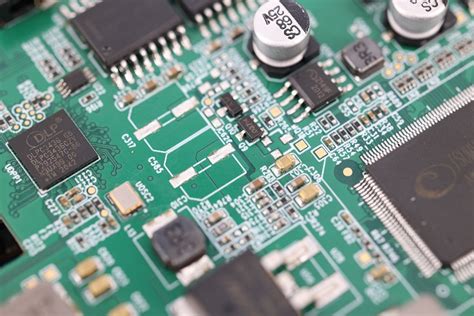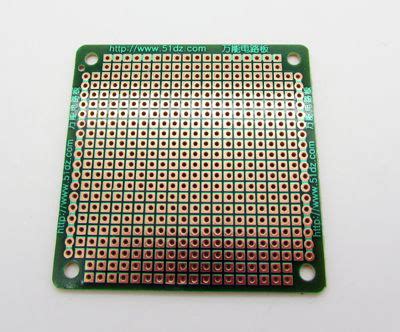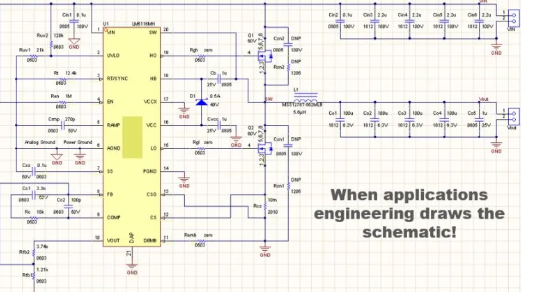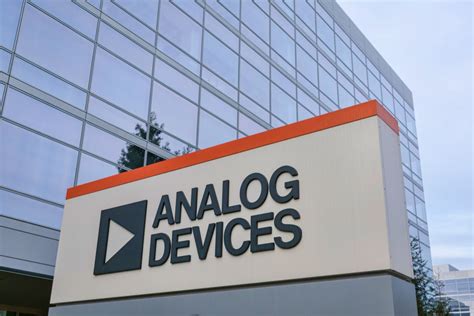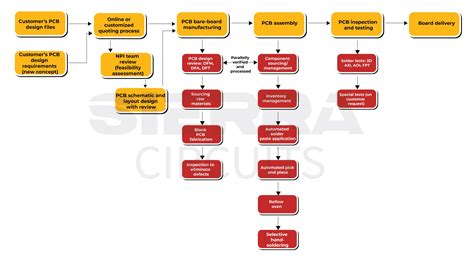Essentials of Bare Printed Circuit Board Manufacturing Explained
Key Takeaways
Understanding the essentials of bare printed circuit board (PCB) manufacturing is vital for anyone involved in the electronics industry. PCB manufacturing companies play a crucial role in ensuring that electronic products are reliable and efficient. A key focus in this field is the manufacturing cost, which can vary significantly based on factors such as materials used, production techniques, and order volume.
To manage these costs effectively, it’s important to choose the right partners in your pcb manufacturing business. By working with established pcb manufacturing companies, you can leverage their expertise to optimize your designs for manufacturability while ensuring high-quality output. Here’s a quick reference table highlighting some common factors influencing pcb manufacturing costs:
| Factor | Impact on Cost |
|---|---|
| Volume of Production | Higher volumes usually reduce cost per unit |
| Type of materials used | Premium materials can increase costs significantly |
| Complexity of design | More complex designs may require specialized production methods leading to increased labor costs |
| Lead time requirements | Rush orders often incur higher costs |
You may also find it beneficial to stay informed about innovations and trends that can affect production efficiency and quality. For example, advancements in automation technology are making it easier for pcb manufacturing companies to enhance precision and reduce waste.
“Investment into modern technologies can streamline your PCB manufacturing processes and lead to significant long-term savings.”
By keeping such factors in mind, you can better navigate the intricate landscape of bare printed circuit board manufacturing, ensuring your products meet both quality standards and budgetary constraints while maintaining a competitive edge in today’s fast-paced market. For more information on state-of-the-art PCB services, consider checking out Andwin Corporation.
Introduction to Bare Printed Circuit Boards
Bare printed circuit boards (PCBs) serve as the backbone of modern electronic devices, allowing for the connection of various electronic components in a compact format. Understanding the fundamentals of pcb manufacturing is crucial as it involves specific processes and materials that can significantly impact the overall functionality and cost-effectiveness of electronic products. The evolution of pcb manufacturing companies has led to improved techniques and technologies, enhancing efficiency while maintaining quality. In your exploration of the pcb manufacturing business, you will discover that each step, from design to assembly, plays a pivotal role in ensuring that these boards meet industry standards. Moreover, knowing how pcb manufacturing cost can fluctuate based on design complexity, materials used, and production volume will enable you to make informed decisions when selecting suppliers or partners for your projects. Emphasizing quality from the outset is necessary not only for compliance with safety regulations but also for ensuring longevity and performance in final applications.
Key Processes in Bare Printed Circuit Board Manufacturing
The journey of bare printed circuit board (PCB) manufacturing begins with the design phase, where careful consideration is given to the layout and functionality. Utilizing advanced design software, engineers ensure that the circuit design will meet the specifications of the final electronic product. Once finalized, the next step involves etching, where a thin layer of copper is applied to a substrate, typically made from materials such as FR-4 or CEM-1. During this process, unwanted copper is removed, creating the desired circuit patterns. Following etching, drilling holes for component placements becomes essential; precision here is critical to accommodate various components used in electronics.
After drilling, solder mask application takes center stage. This protective layer not only enhances durability but also plays a crucial role in preventing accidental solder bridging during assembly. Subsequently, silkscreen printing is performed to label components and define connectivity on the PCB surface. This adds another layer of clarity for manufacturers and technicians during assembly and debugging.
Once these essential processes are complete, quality control measures are implemented throughout to ensure that the produced bare PCBs, produced by reputable PCB manufacturing companies, meet industry standards for performance and reliability. By understanding these key processes in depth, you can appreciate how each step contributes significantly to the overall PCB manufacturing cost and lays a solid foundation for your PCB manufacturing business endeavors. Each element must be executed with precision to foster efficiency and uphold quality assurance—both vital aspects in today’s competitive technology landscape.
Essential Materials Used in PCB Production
In the realm of pcb manufacturing, the choice of materials plays a critical role in determining the performance and reliability of the final product. Primarily, copper is utilized for its excellent electrical conductivity, forming the traces on the bare printed circuit boards. Accompanying copper, substrates such as FR-4 (a flame-retardant material) and polyimide are prevalent choices due to their thermal stability and dielectric properties. Notably, the selection of these materials directly influences the overall pcb manufacturing cost, making it essential for pcb manufacturing companies to evaluate their options carefully. Additionally, materials like solder mask and silkscreen ink are integral for protecting circuitry and providing labels on the surface of PCBs, respectively. As you immerse in this field, recognizing how these essential components interact not only shapes your perspective on a successful pcb manufacturing business but also enhances your understanding of quality control standards in place that ensure product efficacy. Thus, familiarity with these materials enables you to engage more effectively with industry trends and innovations as they unfold.
The Role of Bare PCBs in Modern Electronics
Bare printed circuit boards (PCBs) are foundational elements in the realm of modern electronics. They provide the necessary support and electrical pathways for various electronic components, enabling devices to function as intended. In today’s fast-paced technological landscape, the demand for reliable pcb manufacturing is paramount. Without high-quality bare PCBs, countless devices—from smartphones to medical equipment—would struggle to achieve their intended performance.
When you consider the vast number of pcb manufacturing companies that operate globally, it becomes clear just how critical these components are to advancing technology. Each pcb manufacturing business is not just focused on producing circuit boards; they also play a vital role in innovation and quality assurance. The pcb manufacturing cost is an essential factor for these companies as they work to balance affordability with the necessity of high standards.
As you explore the intricate processes of PCB design and assembly, you will find that bare PCBs serve as the backbone of countless applications. They encapsulate a world where efficiency meets innovation, driving advancements across multiple sectors. In essence, understanding the role of bare PCBs isn’t just about recognizing their function; it’s about appreciating their impact on our daily lives and the technological innovations we rely upon.
Quality Control and Testing Methods for Bare PCBs
Ensuring the reliability and functionality of bare printed circuit boards (PCBs) is paramount in the pcb manufacturing process. Quality control starts with strict compliance to industry standards, involving a series of rigorous testing methods designed to identify any defects before the product reaches consumers. You may encounter various techniques used by pcb manufacturing companies, including visual inspection, automated optical inspection (AOI), and electrical testing. Visual inspection allows for a preliminary assessment of solder joints and overall board quality, while AOI employs high-resolution cameras to detect deviations from predefined specifications. Electrical testing is crucial, as it verifies that all circuits are functioning correctly without short circuits or open traces.
In addition to these methods, stress testing and thermal cycling can simulate the PCBs’ performance under extreme conditions, ensuring durability and longevity. Understanding these quality control processes will not only help you appreciate the significance of quality in pcb manufacturing cost, but also inform your decisions when engaging with pcb manufacturing businesses. When you choose a provider that invests in comprehensive quality control protocols, you are ultimately ensuring that your electronic products meet high standards of performance and reliability, which is vital in today’s technologically driven market.
Innovations and Trends in PCB Manufacturing
The landscape of pcb manufacturing is continuously evolving, with numerous innovations reshaping how pcb manufacturing companies operate and deliver their products. One significant trend is the integration of automation and advanced robotics in the production process. This not only enhances efficiency but also helps reduce pcb manufacturing costs by minimizing human error and streamlining workflow. Additionally, the adoption of machine learning and AI technologies allows manufacturers to predict potential problems before they occur, enabling a proactive approach to quality control.
Another notable trend is the increasing demand for smaller, more complex designs. Enhanced design software tools now allow for more intricate layouts than ever, catering to the needs of modern electronic devices that utilize smaller form factors while requiring higher performance levels. Moreover, there’s a growing focus on sustainable practices in pcb manufacturing business, with companies exploring eco-friendly materials and processes to reduce their environmental footprint.
The rise in the Internet of Things (IoT) has also impacted pcb manufacturing, necessitating faster production cycles without compromising quality. Companies are investing in manufacturing flexibility to adapt to changing market demands swiftly. As these innovations unfold, they set the stage for a more efficient and environmentally conscious future in bare printed circuit board production, ensuring that your technological needs are met effectively and sustainably.
Challenges Faced by PCB Manufacturers
In the realm of pcb manufacturing, companies encounter a myriad of challenges that can impact the pcb manufacturing cost and overall efficiency of production. One significant hurdle is the rapid pace of technological advancement, which requires manufacturers to continually innovate and adapt their processes to meet the demands of modern electronics. This often involves investing in advanced machinery and training personnel to operate new technologies, adding to the financial strain on pcb manufacturing companies. Additionally, supply chain disruptions can lead to material shortages or increased prices, making it essential for your pcb manufacturing business to cultivate robust supplier relationships and evaluate alternative materials. Furthermore, maintaining stringent quality control is paramount; even minor defects in bare printed circuit boards can lead to significant failures in end products, compounding costs and damaging reputations. As a result, navigating these challenges requires a strategic approach that balances innovation with cost management while ensuring that quality standards remain uncompromised.
Future Outlook for Bare Printed Circuit Board Technology
As the demand for advanced electronics continues to grow, the future of bare printed circuit board (PCB) technology looks promising. In the coming years, several key trends will shape the landscape of pcb manufacturing. First, innovation in materials and processes is expected to enhance the efficiency and performance of bare PCBs. This shift will likely involve a greater focus on sustainable practices and eco-friendly materials, as manufacturers strive to reduce their carbon footprint while maintaining competitive pcb manufacturing costs.
Moreover, advancements in automation and digitalization will likely revolutionize the operations of pcb manufacturing companies. By utilizing smart technologies and IoT (Internet of Things), these companies can streamline production processes, minimize errors, and optimize resource management, ultimately contributing to a more robust pcb manufacturing business environment.
Another significant aspect will be the increasing complexity required in designing PCBs for emerging technologies such as 5G, IoT devices, and electric vehicles. Such innovations will demand a higher level of precision and customization from bare PCB manufacturers. Thus, collaboration between designers and manufacturers will be crucial to meet these evolving needs efficiently.
As a result of these developments, you can anticipate a thriving marketplace where adaptability and forward-thinking strategies are vital for success in pcb manufacturing. The ongoing evolution will not only enhance product capabilities but also improve supplier-client relationships as transparency becomes more central to business operations within the industry.
Conclusion
In the realm of pcb manufacturing, there exists a profound impact on the evolution of electronic devices. Understanding the nuances of bare printed circuit board manufacturing is essential for anyone involved in this rapidly advancing industry. By partnering with leading pcb manufacturing companies, you can ensure that you are utilizing advanced methods and high-quality materials, which are crucial for creating reliable and efficient PCBs. Furthermore, considering pcb manufacturing cost is vital for businesses looking to remain competitive while maintaining quality standards. As you venture into the pcb manufacturing business, it’s important to keep abreast of innovations and sustainability trends that shape production processes and product lifecycles. In conclusion, recognizing the significance of bare PCBs not only enhances your technical grasp but also empowers your strategic decisions in a market that thrives on precision and innovation. Whether you are designing new products or optimizing existing ones, this fundamental knowledge will serve as a cornerstone for your success in modern electronics.
FAQs
What is the definition of bare printed circuit board (PCB) manufacturing?
Bare printed circuit board (PCB) manufacturing refers to the process of creating PCBs without any components mounted on them. These boards provide the foundation for the electronic circuits and are crucial for signal integrity and functionality.
What are common processes involved in PCB manufacturing?
The main processes in PCB manufacturing include design, etching, lamination, and drilling. Each step is essential to ensure that the final product meets required specifications and maintains high quality.
How do I choose a PCB manufacturing company?
Selecting a suitable PCB manufacturing company involves researching their reputation, quality control measures, production capabilities, and customer reviews. It’s also important to consider their expertise in specific technologies when assessing their suitability for your needs.
What factors affect PCB manufacturing cost?
The cost of PCB manufacturing can be influenced by various factors, including materials used, board complexity, volume of production, and specific customer requirements. Understanding these elements will help you estimate overall expenses effectively.
Can I customize my PCB through manufacturers?
Yes, many PCB manufacturing companies offer customization options allowing you to tailor your boards according to your specifications. This can involve changes in design, size, layer count, and materials used.


